Regional Science and Policy Forum on R2R/WEM Approach
to CLUP and PDPFP
(CALABARZON Region)
The CALABARZON Regional Science and Policy Forum on Ridge-to-Reef/Watershed Ecosystem Management (R2R/WEM) Approach to Comprehensive Land Use Planning (CLUP) and Provincial Development and Physical Framework Plan (PDPFP) transpired on December 1, 2023, at the Laguna Sports Complex. Organized by the WILUP team in collaboration with the Laguna Provincial Planning and Development Office, the forum facilitated knowledge exchange and collaboration among various stakeholders.
Distinguished speakers, all from Region 4A government agencies, addressed specific aspects related to CLUP and PDPFP. EnP. For the first batch of presentations, Ms. Elizabeth C. Bandojo from Department of Human Settlements and Urban Development (DHSUD) presented insights into common reasons for delays in CLUP approval and Ms. Melanie B. Enomis from Department of Interior and Local Government (DILG) discussed challenges in monitoring Comprehensive Development Plan (CDP) formulation approvals. Representing National Economic and Development Authority (NEDA), Mr. Marlon T. Natividad explored the alignment of Local Government Unit (LGU) plans with Regional Development Plan (RDP) while Mr. Nicole John B. Garcia from Department of Environment and Natural Resources (DENR) shared insights on using watershed management for CLUP preparation. Additionally, Dr. Rex Victor Cruz presented the R2R/WEM Approach to PDPFP, outlining potential benefits and conditions for robust implementation.
Representatives from the provincial offices of CALABARZON, including provincial planners and personnel from various departments attended the forum. Their respective municipal planners and officials also represented selected municipalities from Laguna and Batangas. Planners and concerned personnel of regional government agencies and State Universities and Colleges (SUCs) of Region IV-A that can be a technical hub of experts in CLUP Planning were also active participants.
The outcomes of the forum, including strengthened collaboration and establishing a network for ongoing support, align with the broader goals of the WILUP project. These achievements set a positive precedent for future regional initiatives in sustainable land use planning and ecosystem management.
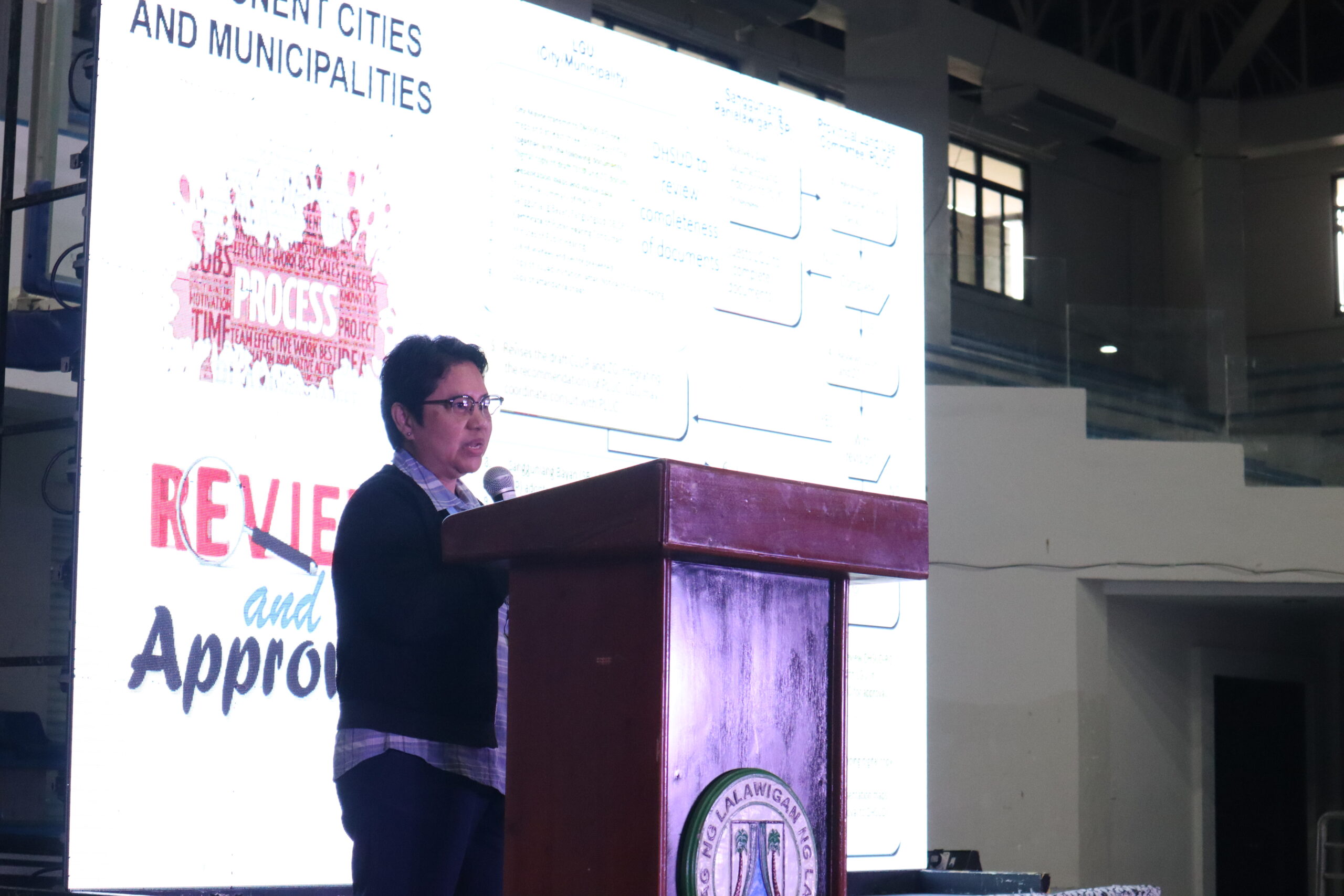
EnP. Elizabeth C. Bandojo discussed the factors behind the extended approval time of CLUP.
EnP. Elizabeth C. Bandojo presented the factors contributing to the prolonged approval timeline of CLUP. Commencing her presentation, Ms. Bandojo discussed the review and approval process undertaken by the DHSUD in accordance with Executive Order (EO) 72. She also mentioned the key players in the CLUP Review and Approval Process which includes the LGU, Sangguniang Panlalawigan (SP), and the Provincial Land Use Committee (PLUC).
Ms. Bandojo also discussed the challenges typically encountered by each of the key players to beat the 90-day period for the review and approval process outlined in EO 72 Section 2. These challenges include but are not limited to change in administration, lack of technical personnel, hiring job orders, limited and multifunctional planning, different priorities, technical difficulty, lack of documentary requirements, and non-compliance to Local Government Code Sec 20 and Memorandum Circular 54. For the SP, it was mentioned that the challenge is related to the election period. While for the PLUC these include the varying representatives from National Line Agencies, installment submission of comments, late submission of comments, and leniency in imposing deadlines to submit comments and recommendations.
The presentation concluded by affirming the DHSUD’s commitment to expediting the review and approval process. Ms. Bandojo also emphasized the status of the CLUP Zoning Ordinance in CALABARZON, providing an overview of updated CLUPs per province, those earmarked for updating, and those currently undergoing formulation.
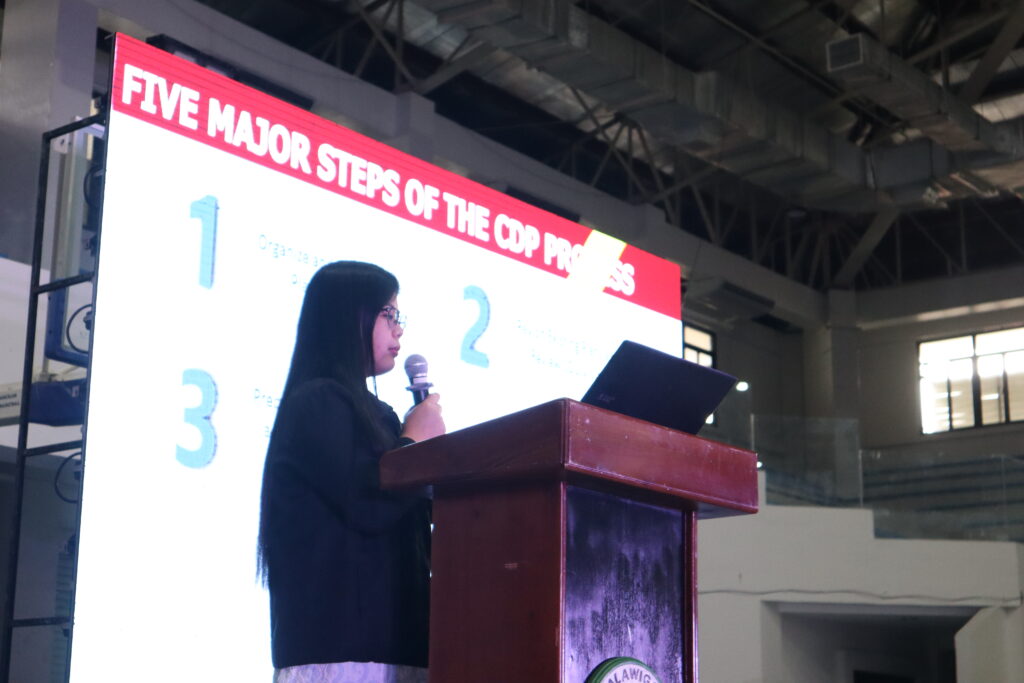
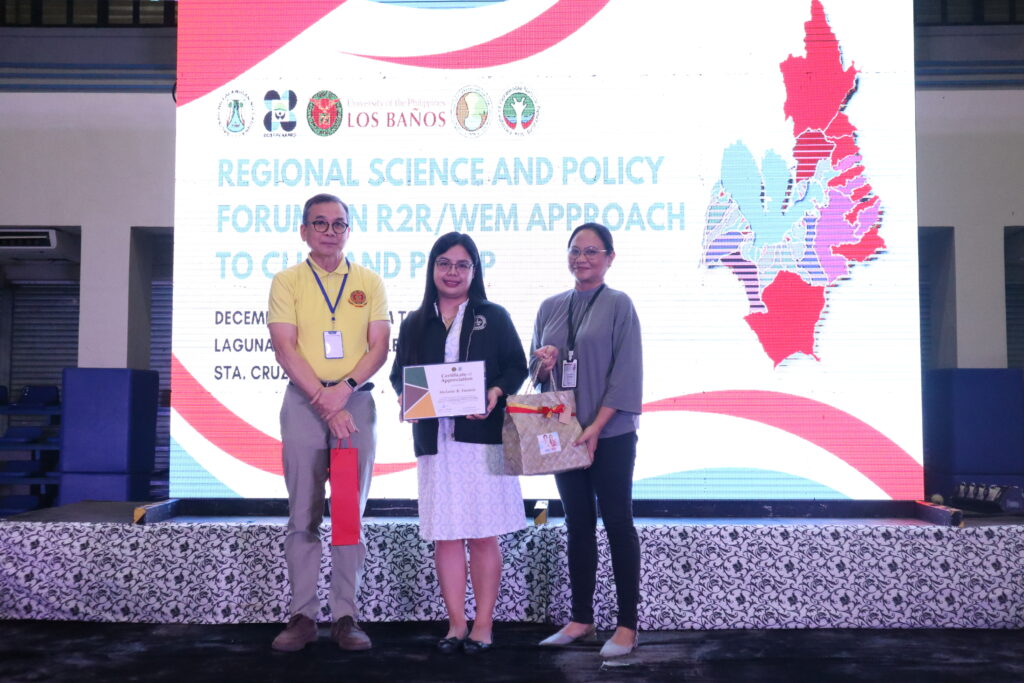
Ms. Melanie B. Enomis highlighted the challenges in overseeing the approval process for CDP formulation.
Ms. Melanie B. Enomis addressed the challenges associated with monitoring the approval process of CDP formulation. She initially explained the legal foundation for crafting the CDP for each LGU, followed by a comparison with the CLUP. She then delved into the five major steps of the CDP process.
Regarding the challenges encountered in monitoring the approval of CDP, Ms. Enomis cited issues such as alterations in the monitoring structure, a lack of CDP expertise, constraints in resources for providing technical assistance to specific LGUs, and modifications to data and inputs in the monitoring forms. In light of these challenges, she outlined potential approaches for each department to address them.
Concluding her presentation, Ms. Enomis provided updates on the status of CDP formulation and updates in the region, detailing the number of approved CDPs per province, the count of CDPs slated for updating, and those currently undergoing formulation.
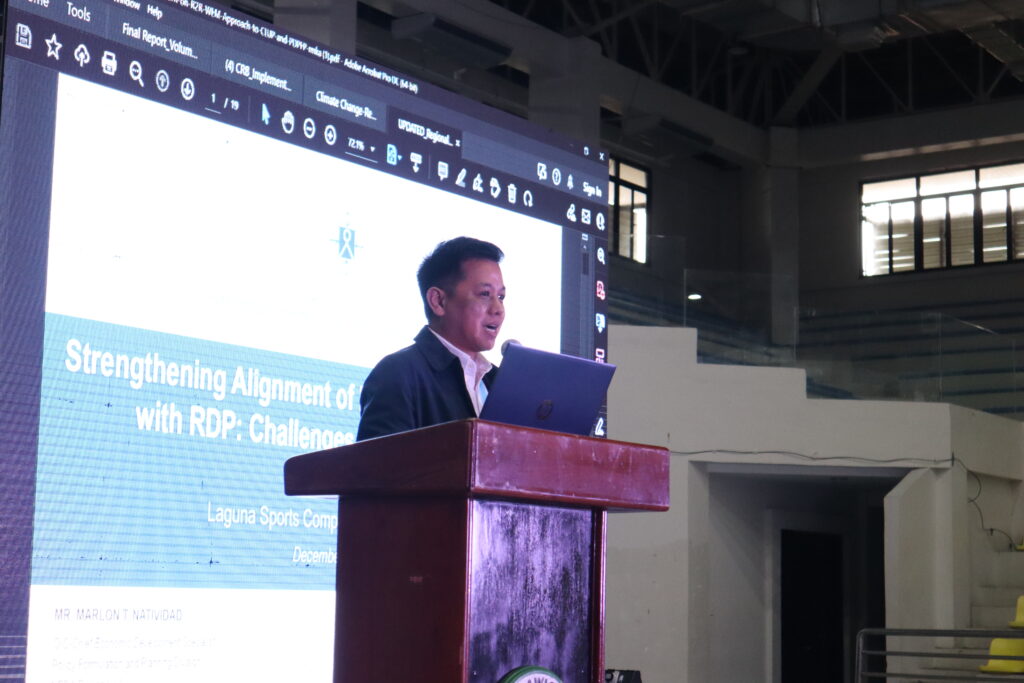
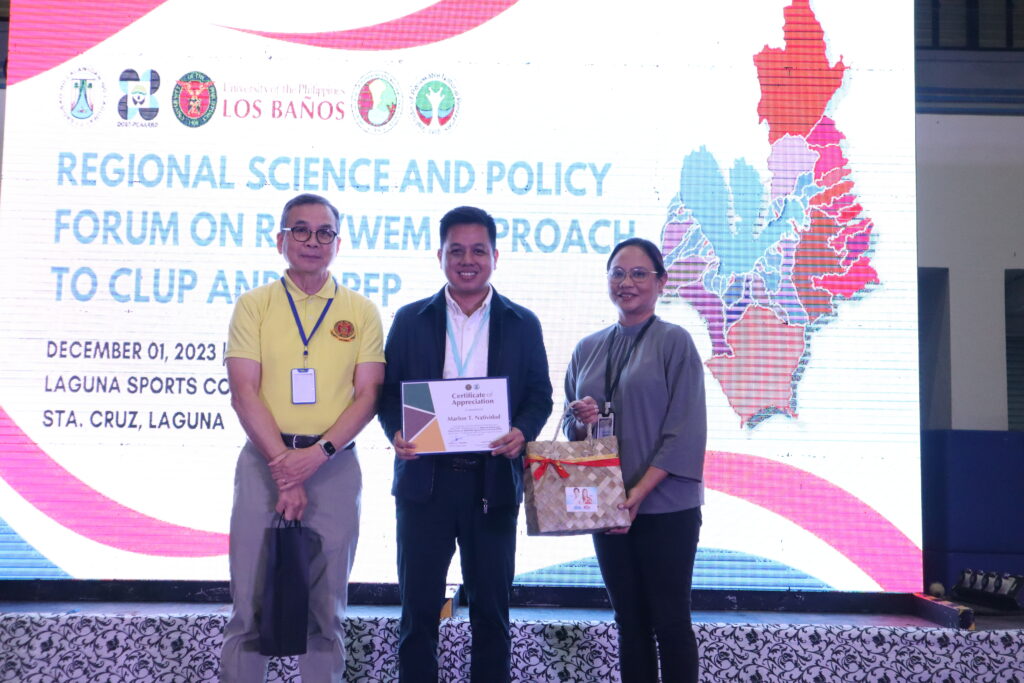
Mr. Marlon T. Natividad exploring challenges and opportunities to enhance the alignment of LGU Development Plans with RDP..
Mr. Marlon T. Natividad delved into the challenges and opportunities to strengthen the alignment of LGU Development Plans with RDP. Among the challenges he highlighted is the absence of updated land use plans and zoning ordinances in certain LGUs. Additionally, he pointed out the insufficiency of available data. Regarding potential opportunities, he suggested the establishment of a CALABARZON Development Planning Leaders Group, the organization of a planners forum, and the formulation of an RDP communication plan.
Towards the conclusion of his presentation, Mr. Natividad proposed some recommendations to reinforce the alignment of development plans with the RDP. These include providing technical assistance in developing Climate Change/Disaster Risk Reduction Management (CC/DRRM)-enhanced CLUPs, CDP, Local Disaster Risk Reduction and Management (DRRM) Plans, and PDPFP. Additionally, he recommended conducting Regional Land Use Committee (RLUC) advocacy on the R2R approach in PDPFPs and other local plans and policies to address land and water degradation. He also suggested the adoption of a Watershed Management Plan and emphasized the promotion of enhancements in Regional and Local DRRM Plans and the Local Climate Change Action Plan (LCCAP).
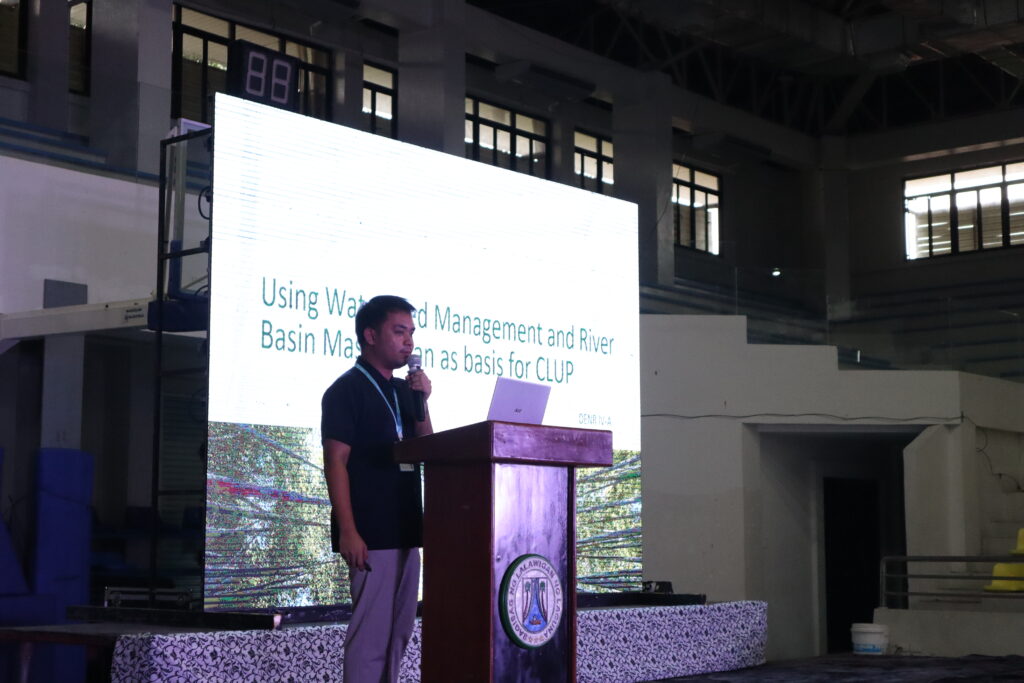
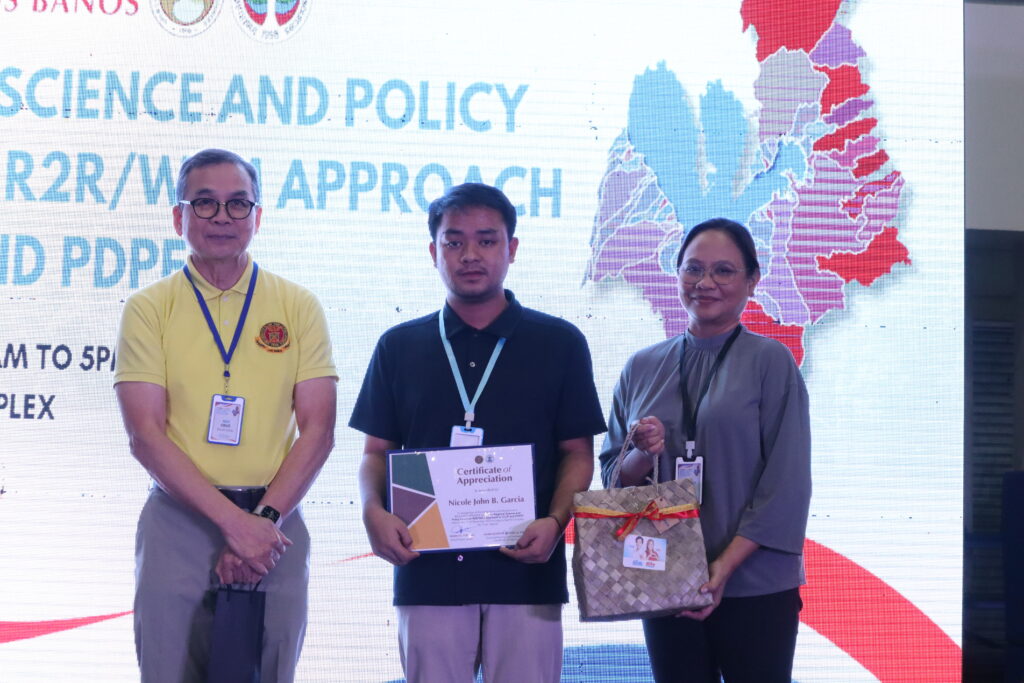
Mr. Nicole John B. Garcia explained the processes and protocols for creating the IWMP
Mr. Nicole John B. Garcia presented the guidelines and procedures involved in formulating the Integrated Watershed Management Plan (IWMP). He provided an overview of IWMP, elaborating on its objectives and the essential processes, which encompass watershed characterization and vulnerability assessment. He highlighted that the DENR local office, agencies, or concerned stakeholders would be responsible for implementing the approved IWMP. Moreover, he underscored the pivotal role of watersheds as a unifying and integrative framework when utilized as a platform for land use planning.
